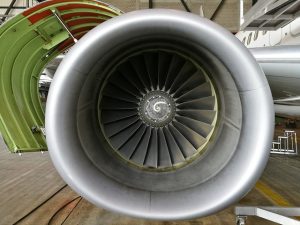
Airplanes must adhere to strict maintenance and servicing schedules. According to the U.S. Bureau of Transportation Statistics (BTS), U.S.-based airlines carried over 800 million passengers in 2022. To ensure a safe flying experience, airlines must follow a maintenance and servicing schedule. How are airplanes maintained and serviced exactly?
Maintenance Programs
Commercial airlines collaborate with regulatory authorities, such as the Federal Aviation Administration (FAA) and airplane manufacturers, to create maintenance programs. Maintenance programs outline the type of maintenance an airplane requires and how often the airplane requires it. Factors that affect maintenance programs include flight cycles, total flight time, manufacturer recommendations and more.
Line Maintenance
Airplanes require line maintenance. Line maintenance is a type of pre-flight maintenance. Before taking off, technicians may check the airplane’s fluids and systems. If they encounter any problems, technicians may troubleshoot these problems as well. Only after performing this pre-flight maintenance will the airplane be given the green light to take off.
Base Maintenance
In addition to line maintenance, there’s base maintenance. Base maintenance is a longer and more extensive type of maintenance. It’s characterized by the removal of the airplane from service. With line maintenance, the airplane remains in service; the airplane is simply checked before flying. With base maintenance, the airplane is taken completely out of service, during which the maintenance is performed.
Base maintenance can last anywhere from one day to several months. It typically consists of time-consuming tasks, such as repairing engine components, repairing structural damage, refurbishing the cabin and more. Tasks such as these take longer than the pre-flight tasks associated with line maintenance. Therefore, the airplane is taken out of service.
Inspections
Inspections are an important part of airplane maintenance and servicing. Airplanes must be regularly inspected. Some of these inspections occur during line maintenance, but others are more time-consuming, thus making them part of basic maintenance.
Technicians may have to inspect the airplane for signs of corrosion. Airplanes are typically designed with corrosion-resistant materials, such as aluminum or composite. Nonetheless, some of their parts may still become corroded when exposed to moisture. Technicians regularly inspect airplanes while looking for signs of corrosion. If detected, the airplane may remain temporarily out of service until the corrosion has been addressed.
In Conclusion
The maintenance and servicing of airplanes is essential to providing passengers with a safe flight experience. It allows commercial airlines to detect and fix minor problems before they snowball into bigger problems.



